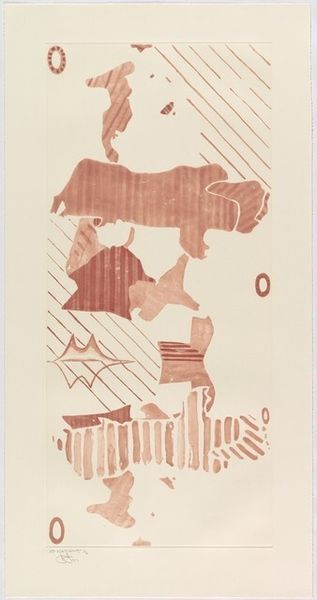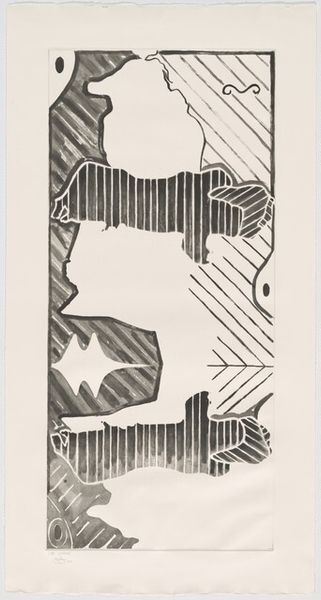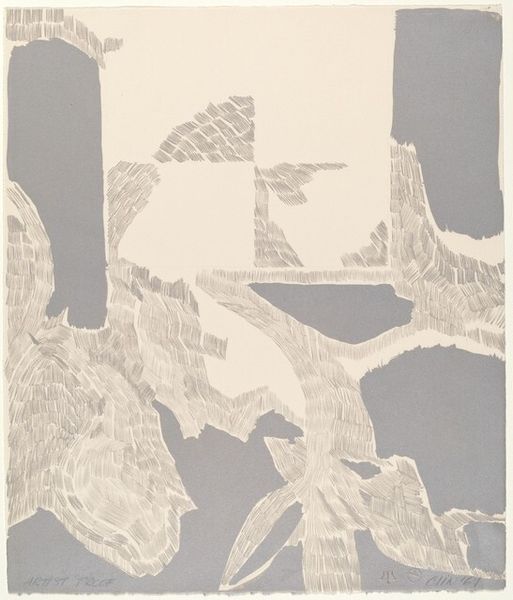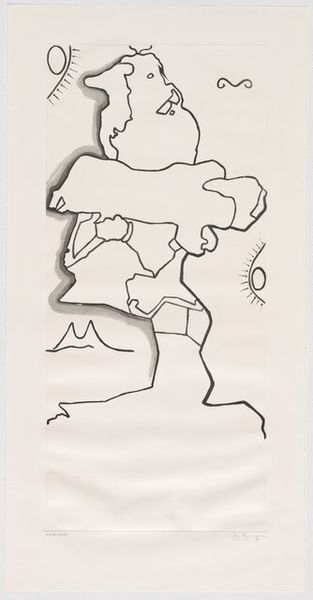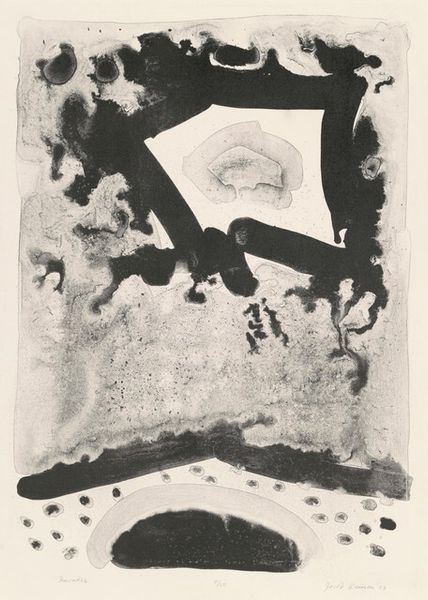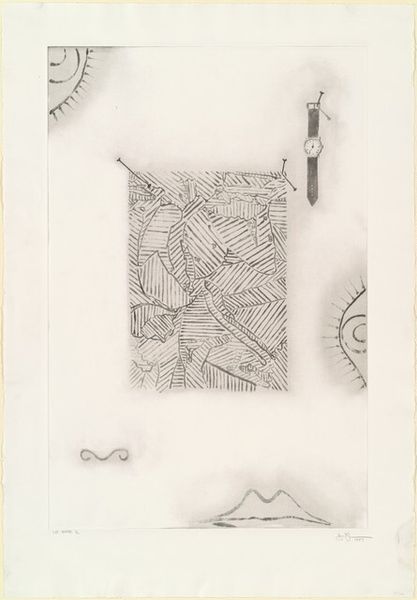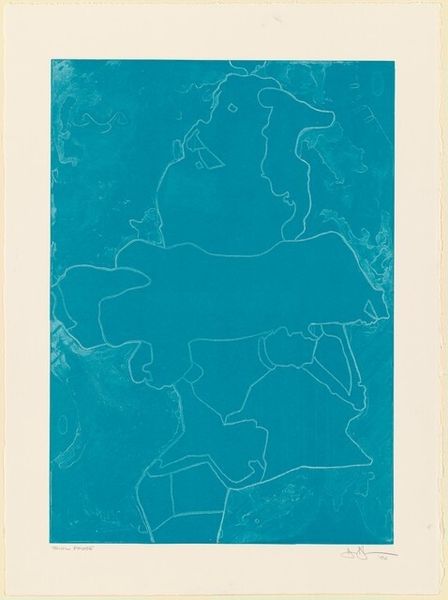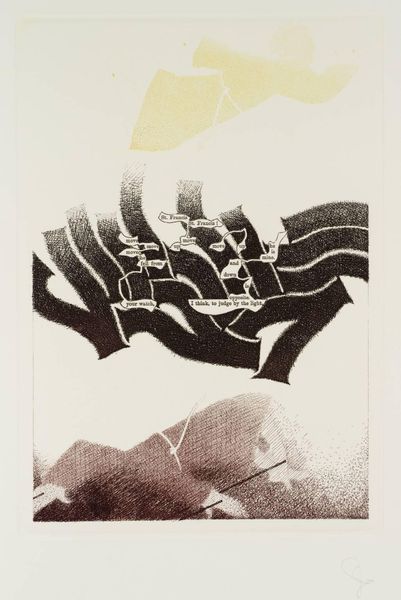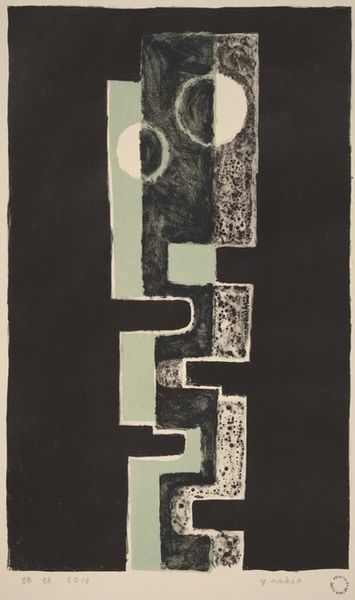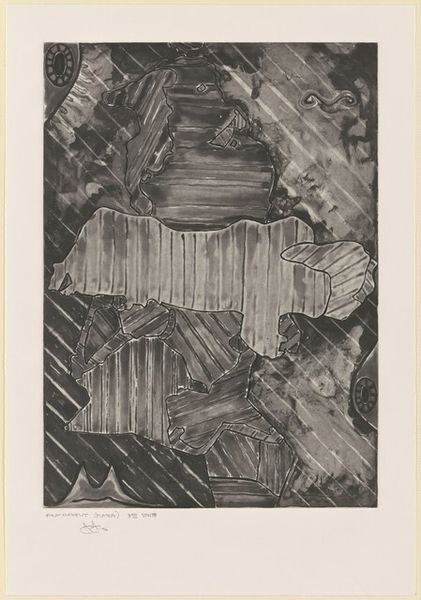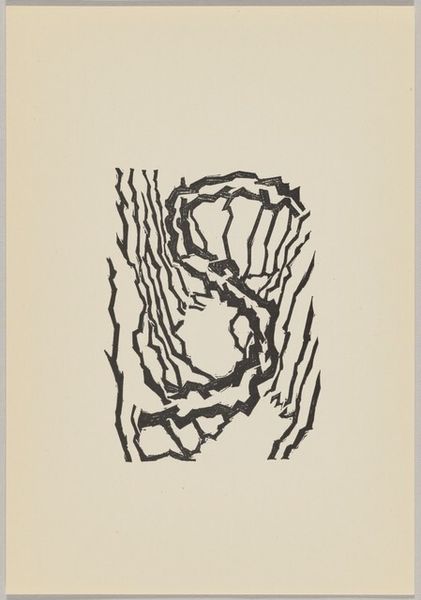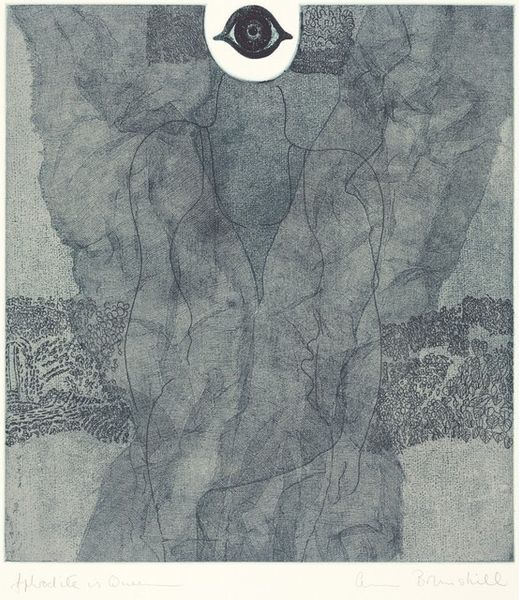![Green Angel 2 [1st Element in Black] by Jasper Johns](/_next/image?url=https%3A%2F%2Fd2w8kbdekdi1gv.cloudfront.net%2FeyJidWNrZXQiOiAiYXJ0ZXJhLWltYWdlcy1idWNrZXQiLCAia2V5IjogImFydHdvcmtzLzY4YTM4MzI3LTVjNjAtNDQzOS04ZTc0LTY4MTEyZTA1ZjQ2Yy82OGEzODMyNy01YzYwLTQ0MzktOGU3NC02ODExMmUwNWY0NmNfZnVsbC5qcGciLCAiZWRpdHMiOiB7InJlc2l6ZSI6IHsid2lkdGgiOiAxOTIwLCAiaGVpZ2h0IjogMTkyMCwgImZpdCI6ICJpbnNpZGUifX19&w=750&q=75)
#
neo-dada
Dimensions: plate: 103.82 × 46.67 cm (40 7/8 × 18 3/8 in.) sheet: 121.6 × 63.5 cm (47 7/8 × 25 in.)
Copyright: National Gallery of Art: CC0 1.0
Curator: Let’s turn our attention to Jasper Johns’ "Green Angel 2 [1st Element in Black]", a mixed-media print on paper from 1997. Editor: It's strikingly austere at first glance. The monochrome palette and stark geometric forms give it a sense of distance. Almost clinical, but not without some peculiar warmth radiating beneath the textures. Curator: The "Green Angel" series, especially within Johns' larger body of work, signifies his engagement with personal history and the reinterpretation of previous themes. The imagery can be viewed through the lens of identity, particularly the shifting landscapes of personal memory and how we reconstruct narratives from fragments. His ambiguous compositions often mirror the elusive nature of lived experience. Editor: The composition itself is quite fascinating. It is balanced yet off-kilter, as the contrasting textures vying for visual dominance, challenging any stable reading. The monochrome allows a complete appreciation of Johns’ intricate layering of shapes. He has orchestrated quite a complex symphony out of such limited components! Curator: Think about the implications of the title, too. The idea of an angel rendered in shades of grey, absent the stereotypical celestial imagery, might suggest a disruption of conventional understandings of the divine or even reflect on figures in the history of racial and political liberation stripped of their halo in popular perception. Editor: And how might semiotics inform that reading? The symbolism is inherently ambiguous and quite polysemous—allowing for various interpretive avenues through his abstraction. Each shape can act as a signifier and the viewer is invited to participate actively in creating a synthesis of meanings within this framework. Curator: Exactly. It encourages critical analysis and speaks volumes about issues like race and marginalisation that impact the reception of art, especially in a milieu still largely shaped by a white, male narrative. Editor: Seeing it this way definitely adds another layer of profundity! The interplay is almost confrontational, given Johns' unique approach. I'd been focused purely on form and composition initially. Curator: And I think exploring it both formally and contextually allows for a better understanding of Johns’ vision and broader societal power dynamics. Editor: It truly demonstrates how multifaceted and stimulating just a black and white print on paper can be. Curator: Indeed. Hopefully, our discussion provides our audience with a richer experience of this unique print.
Comments
No comments
Be the first to comment and join the conversation on the ultimate creative platform.
